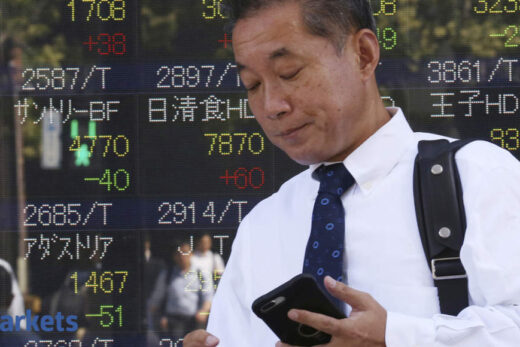U.S. consumer prices increased more than expected in March amid rises in the costs of gasoline and shelter, casting further doubt on whether the Federal Reserve will start cutting interest rates in June.
Two-year yields, which more closely reflect monetary policy expectations, spiked by nearly 20 basis points and were last seen at 4.937%, also their highest level since November.
Fed funds futures traders trimmed their expectations for interest rate cuts to a total of 43 basis points for 2024, down from 67 points ahead of the inflation data.
“We have already seen indications that the market was backing off of any expectation the Fed was going to cut in the first half of the year … now our expectations should be that maybe we get a cut, maybe we get nothing,” said Chris Maxey, managing director and chief market strategist at Wealthspire Advisors.
“I wouldn’t be surprised if we start to see some conversation … around the possibility that they’re going to raise rates later this year,” he said. The consumer price index rose 0.4% last month after advancing by the same margin in February, the Labor Department’s Bureau of Labor Statistics (BLS) said on Wednesday. In the 12 months through March, the CPI increased 3.5%. Economists polled by Reuters had forecast the CPI gaining 0.3% on the month and advancing 3.4% on a year-on-year basis.
U.S. short-term interest-rate futures plunged after the report, with traders betting on a first cut in September and on only two cuts this year, less than the three cuts Fed policymakers had signaled likely in March.
Still, for Mona Mahajan, senior investment strategist at Edward Jones, while hotter than expected inflation complicates the path to lower rates, the long-term story remains one of a cooling economy.
“The direction of travel for the Fed wasn’t just this year, it was two to three years of great moderation. Whether or not we start this year or next year, it remains to be seen,” she said.
She expected higher Treasury yields to make duration – or the idea of buying bonds because of expectations of interest rate cuts – attractive again.
“We think over time the Fed will bring rates to a less restrictive and more neutral stance … so the duration play comes back into play here for investors who maybe had missed the first opportunity,” she said, referring to late last year when benchmark yields touched 5%.
A first test of investor appetite for Treasuries will come later on Wednesday when the government will auction $39 billion in 10-year paper.




